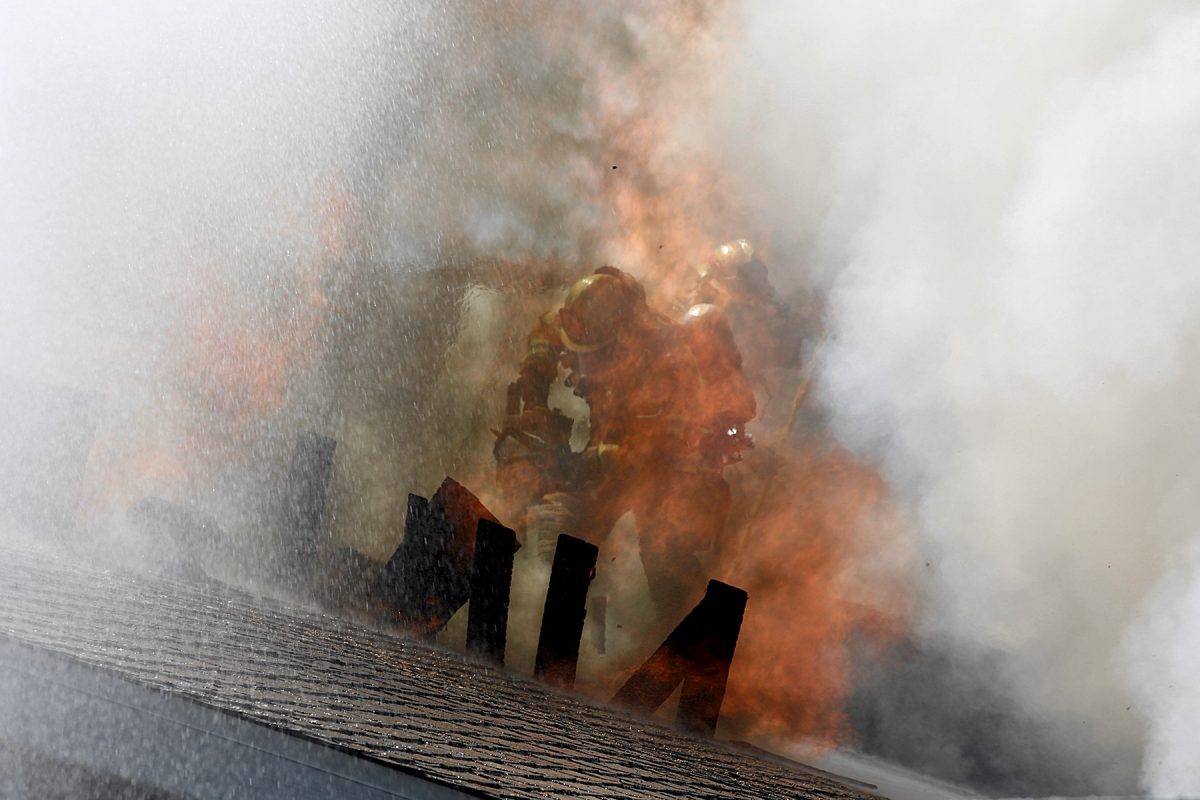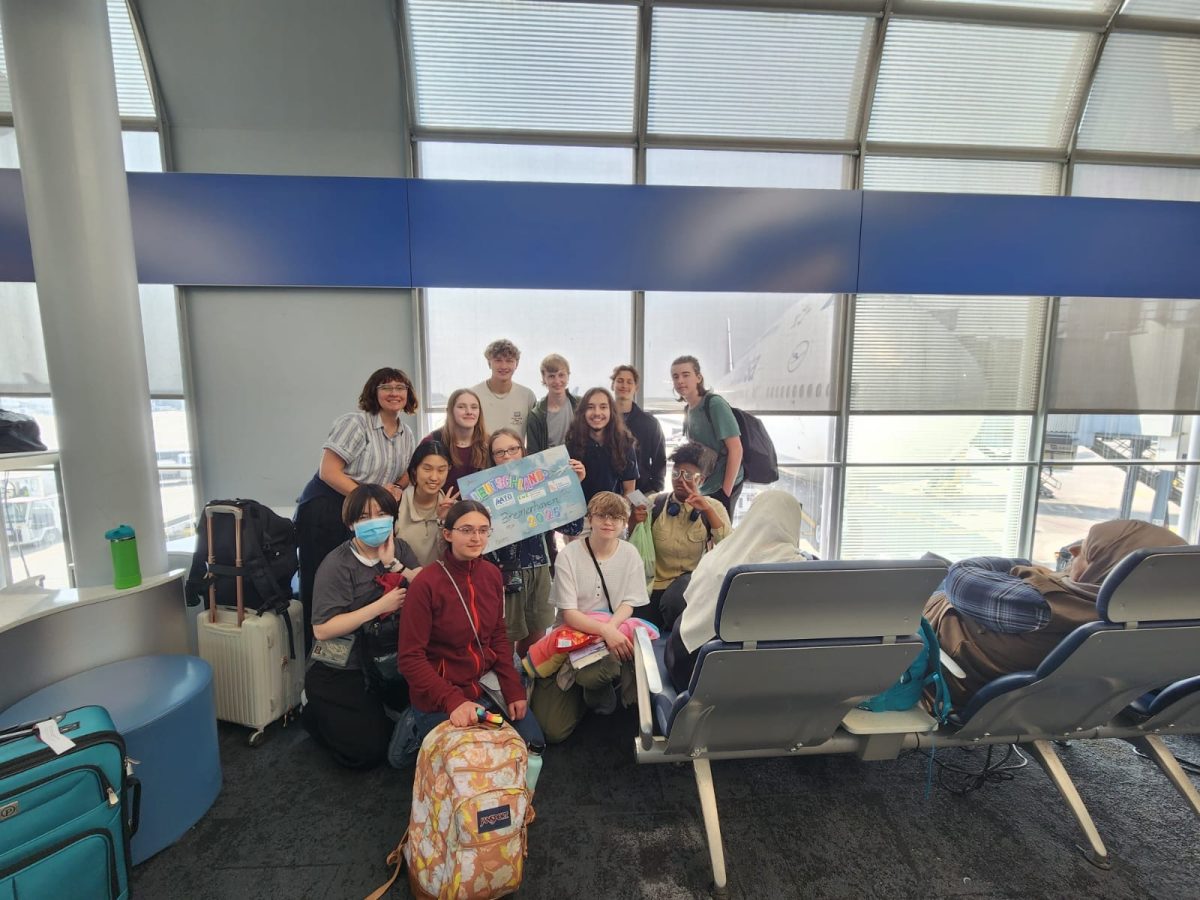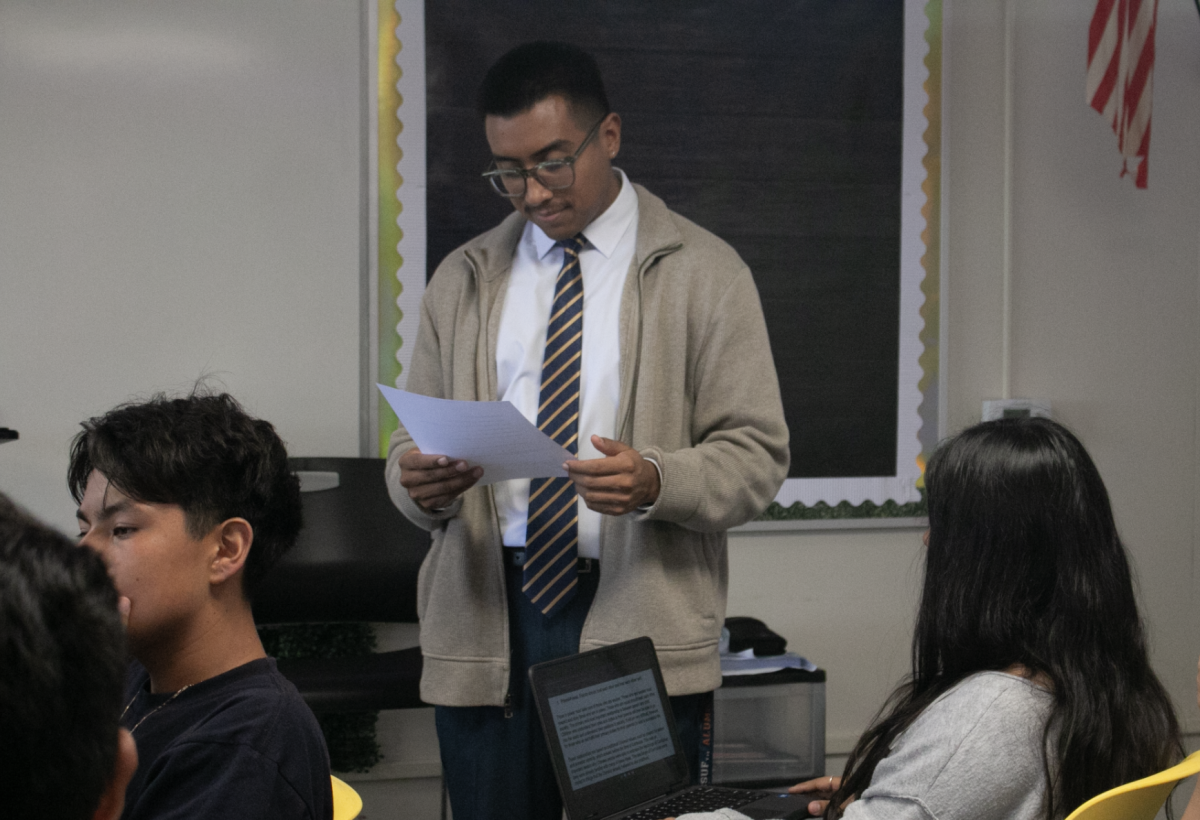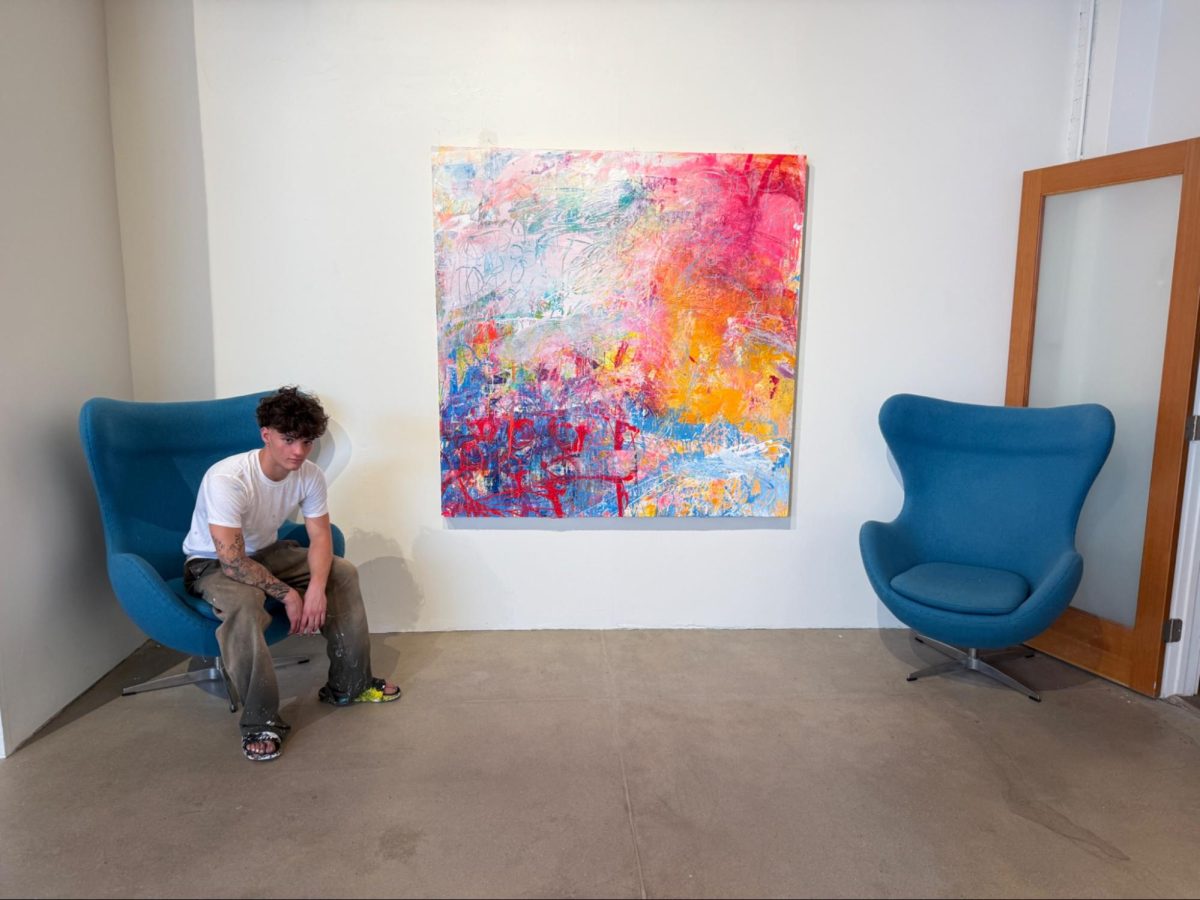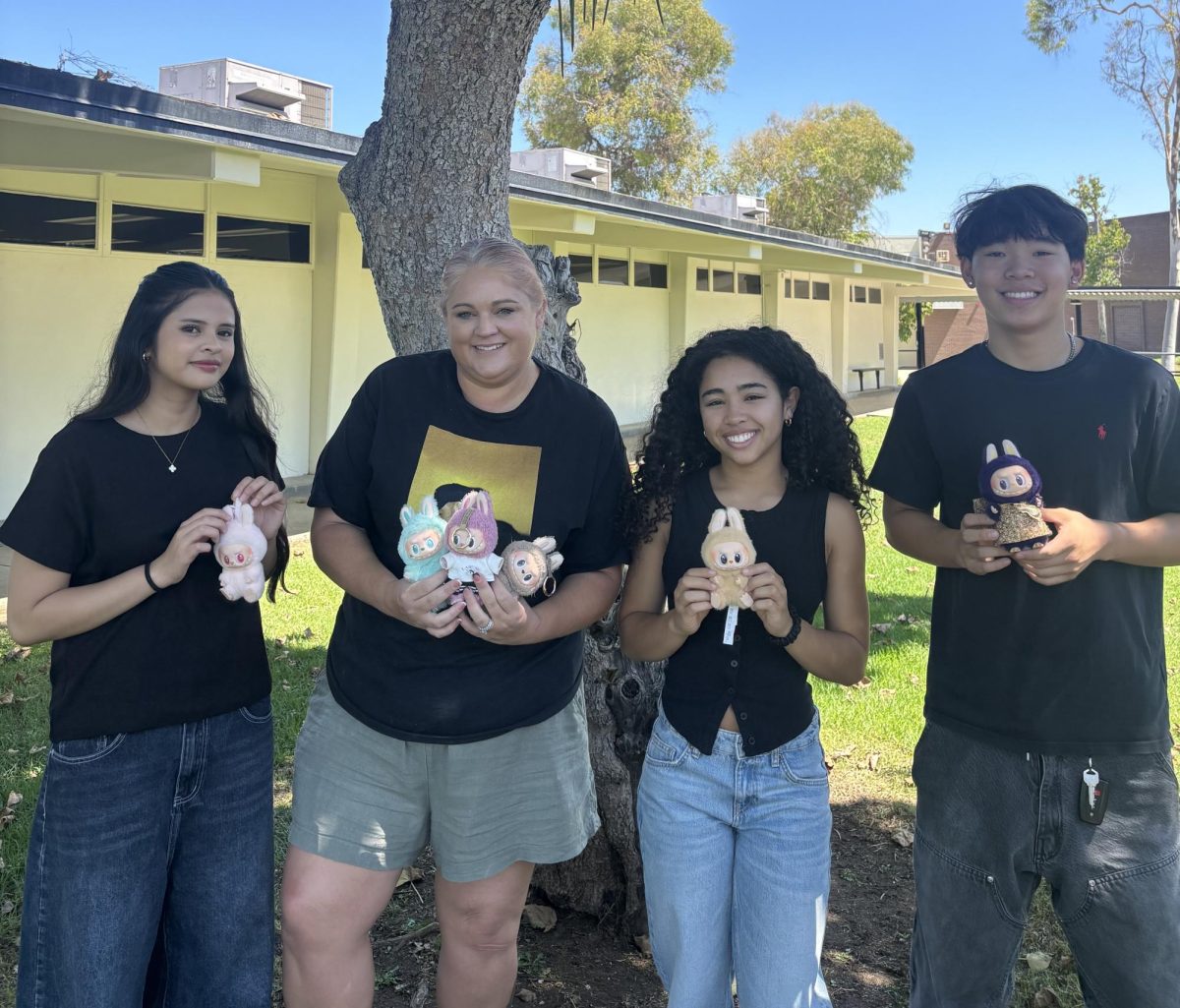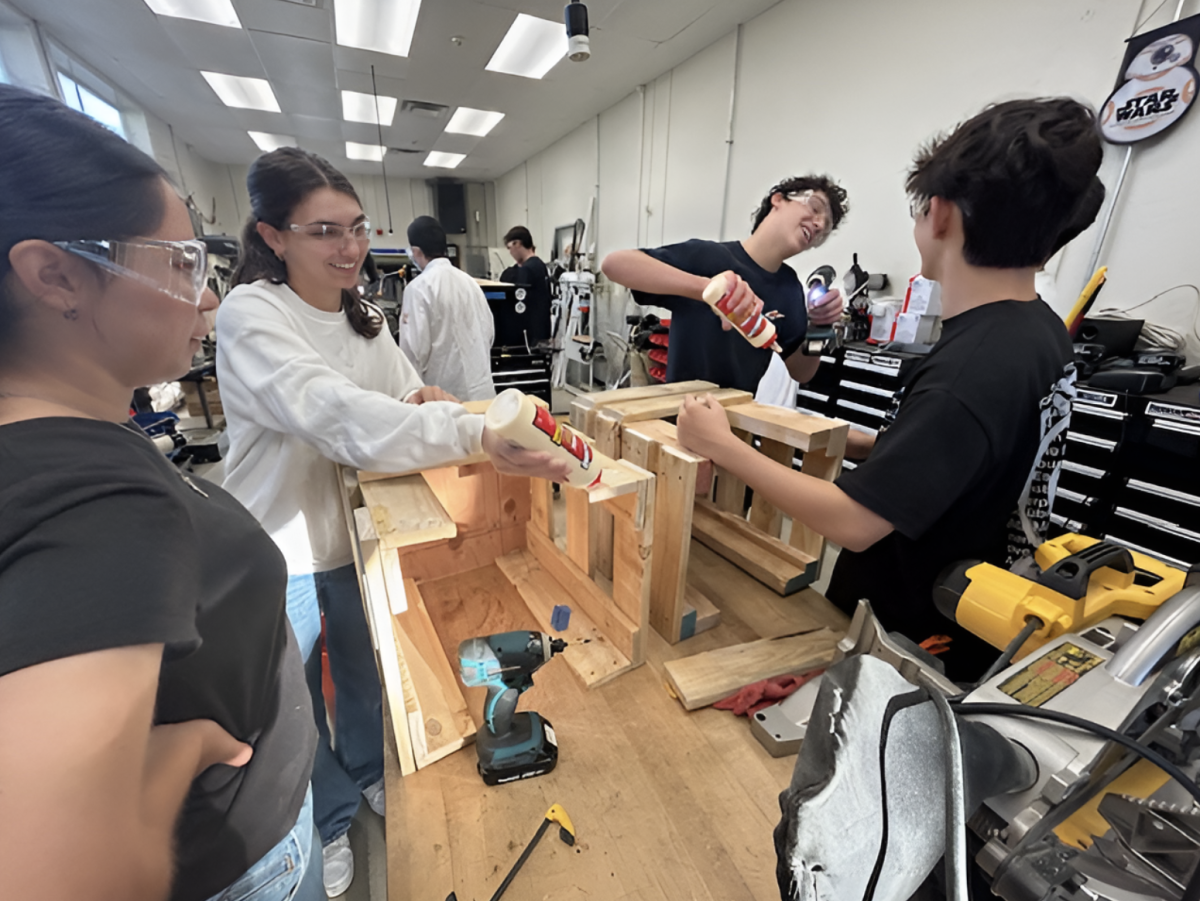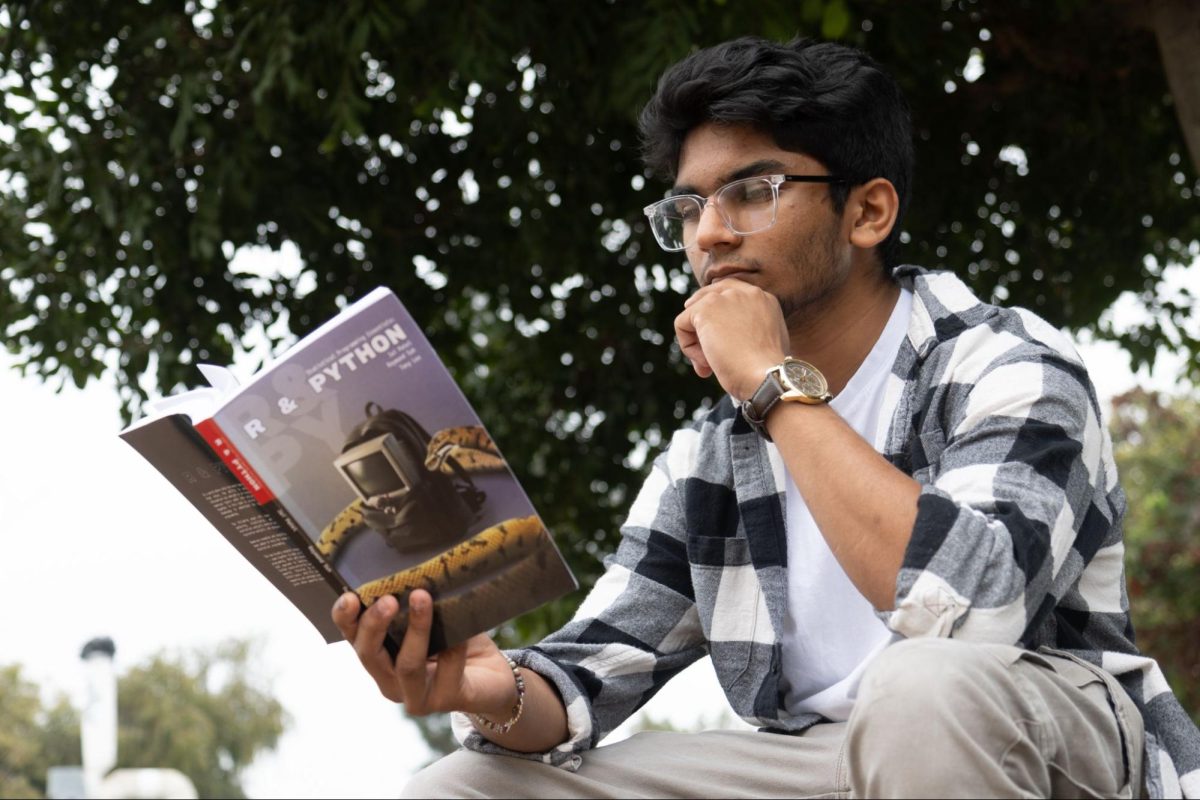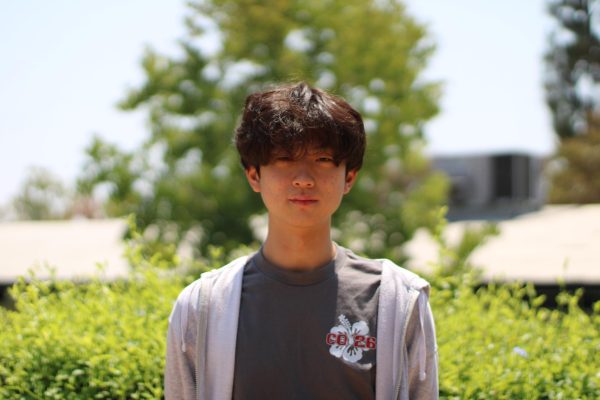When Jose Alarcon visits Sunny Hills classrooms and offices, he usually comes in dress shoes, jeans and a T-shirt.
Accompanied by head custodian Andres Alvardo, the nearly six-foot-tall official may get the attention of a few students who tend to wander their eyes away from the teacher in front of the classroom or their work on their desks.
But, teachers are unlikely to introduce Alarcon to their students, who will remain oblivious to the reason for his visit — to ensure an environment free from any potential risk of fire lighting.
“I think I have seen him before, but I never really thought about it,” said sophomore Abigail Compton, who saw Alarcon in her zero period English Honors class. “It’s pretty cool that he goes around the school to make sure that nothing burns down.”
Some students, on the other hand, have not even seen the man.
“Even though I don’t really know what he does, I think it’s great for the fire inspector to come in and make sure there aren’t any hazards,” senior Michelle Martell said. “I hope that I am able to notice him in the future.”
Alarcon’s official title is fire prevention specialist, one of three safety professionals in the Fullerton Fire Department [FFD].
One of his responsibilities is to fulfill California Safety Code 13146.3, which requires “a city or county fire department or district providing fire protection services to inspect every building used as a public or private school within its jurisdiction.”
The inspections are scheduled usually a week in advance between Alarcon and assistant principal of instructions and operations Sarah Murrietta.
Starting every fall semester, the FFD coordinates with the Fullerton Joint Union High School District [FJUHSD] maintenance and operations division to examine the educational institutions for any possible fire code violations every month.
ALL IN A DAY’S WORK (VISIT)
But what does Alarcon look for during his inspections?
The fire official said it’s his job to check for working “EXIT” signs, fire extinguishers, fire alarms, etc.
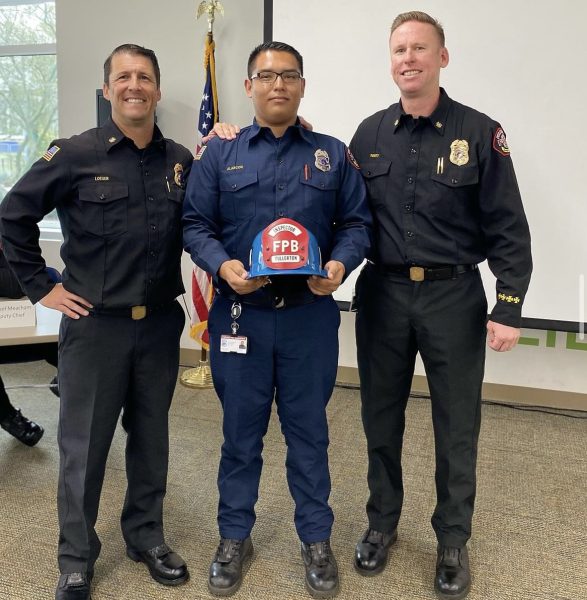
“They do get tedious or repetitive because I do the same thing in every classroom,” he said. “I have to look for signs, papers, extinguishers, the whole thing in hundreds of classrooms.”
However, Alarcon said that it is still his duty to accurately assess the SH campus.
“There could be an issue in any of those rooms I were to skip — I could miss something important and maybe there was something going on in that classroom that I could have caught if I went through them,” Alarcon said. “So while it is tedious, it is necessary to pretty much go into every class and every electrical, mechanical room.”
Once the inspector leaves, he said he sends an email to either Murrietta or the head custodian to notify them of any concerns from his visit.
If he spotted infractions, the email will include a list of violations that must be addressed within a month until his next scheduled appearance, Alarcon said.
If school officials do not fix the issue in time, the fire department works with them to settle it by increasing the amount of inspections each given month.
However, Fugitt said if the inspector is required to repeat inspections after the first two, the fire department and marshal may charge fees up to $272 for each reexamination, depending on the number of visits.
Though she’s never received an infraction-free report, Murrietta said based on her time serving in this position, school officials’ getting violations resolved has never been an issue.
“The citations we get are very fixable even if sometimes they require multiple departments [in the FJUHSD, such as construction] or funding,” she said.
EVEN A PIKACHU STICKER COULD BE DANGEROUS
The funniest concern Alarcon has jotted down was when he saw a Pikachu sticker in a precarious spot in one of the SH classrooms.
“The Pikachu sticker was placed on the fire alarm strobe light,” said Alarcon, who couldn’t recall how long ago this occurred. “It was pretty funny because when the fire alarm went off, the Pikachu sticker would shine.”
A similar infraction occurred during a Jan. 24 fire inspection on campus, he said. The fire department official noticed blue tape covering a part of the red fire alarm in math teacher Mariam Tan’s classroom.
“This is definitely an issue that should not occur, as muffling the alarm may cause it to be drowned out by other items, such as a student with earphones listening to music,” said Alarcon, who reported no other major concerns after that visit. “Every second counts in emergencies, and delaying notification may delay evacuation.”
Tan said she acknowledged her infraction and immediately removed the tape upon getting a Jan. 29 FJUHSD email about it.
“Generally what I do is I put blue tape over just the alarm part of the red box so that instead of being ear-piercingly loud [when the alarm goes off], it is just super-duper loud,” said Tan, who shared her faux pas with her zero period Pre-Calculus Honors class. “I do feel remorse, and I should have been called out for it, but I was sad because it was really loud.”
SURPRISE! YOU GET TWO FIRE EXTINGUISHERS
Besides spotting concerns regarding fire hazards in the classroom, Alarcon said he has to check if the campus meets updated fire codes, especially involving safety equipment like fire extinguishers.
At the start of the school year in August, for example, district officials installed an extra extinguisher in Room 138 and the cafeteria, adding the total number to two in each location.
“Depending on the hazard level and the distance [of the fire extinguisher] from entrances and exits, I or the school may decide to add additional fire extinguishers,” Alarcon said. “Another reason why the fire extinguishers might have been changed is that they must be hydrostatically tested every 12 years [which tests if the tool is functional], but this may be more expensive than simply replacing them with a new one.”
Alarcon gave the following recommendations for how students can help keep the campus safe from fire hazards:
- Report any sparking electrical plugs, faulty exit signs or blocked exit/entrances to teachers
- Avoid bringing any personal lighters
- Extinguish flames before moving on during lab work
- Avoiding mixing chemicals outside of chemistry lessons
“I think that it’s great that they have more extinguishers because in case of emergencies where someone might not be able to access one, it gives them a chance to use the other,” said senior Isaiah Zermeno, who usually gets his lunch from the cafeteria. “It’s never bad to have a backup plan.”
So the next time Alarcon comes to Sunny Hills, students can be assured that someone is working in the background to prevent any fires from starting or spreading.
“I rarely, if ever, find any big problems during my inspections,” Alarcon said. “But, even if it’s very likely nothing will happen, I believe that for the safety of students, I should go through each classroom to prevent fires from igniting.”




